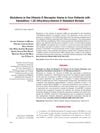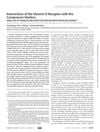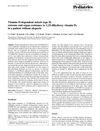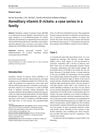Genetic Disorders and Defects in Vitamin D Action
June 2010
in “
Endocrinology and metabolism clinics of North America
”
hereditary vitamin D-resistant rickets HVDRR 1α-hydroxylase deficiency VDDR-1 CYP27B1 gene calcitriol VDR gene alopecia hypocalcemia secondary hyperparathyroidism rickets calcium therapy vitamin D-resistant rickets vitamin D deficiency vitamin D receptor hair loss low calcium high parathyroid hormone bone softening calcium treatment
TLDR Two rare genetic diseases cause severe rickets in children due to defects in vitamin D metabolism.
The document "Genetic Disorders and Defects in Vitamin D Action" discussed various genetic disorders affecting vitamin D metabolism, particularly focusing on hereditary vitamin D-resistant rickets (HVDRR) and 1α-hydroxylase deficiency (VDDR-1). It highlighted that mutations in the CYP27B1 gene cause VDDR-1, treatable with calcitriol, while mutations in the VDR gene cause HVDRR, leading to high calcitriol levels, resistance to vitamin D treatment, and often alopecia. Both conditions present with hypocalcemia, secondary hyperparathyroidism, and severe rickets. The study emphasized the importance of understanding these genetic defects for better diagnostics and treatments, noting that VDR is crucial for hair growth and calcium absorption. Mouse models confirmed these findings, showing that high-dose calcium therapy could manage HVDRR symptoms except alopecia.







